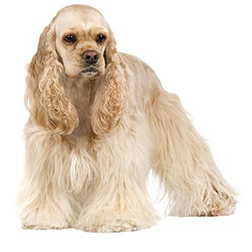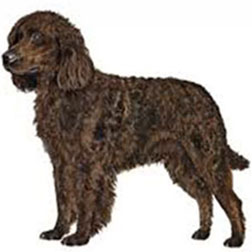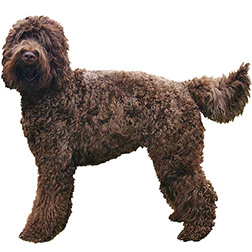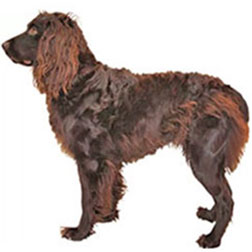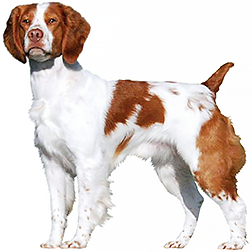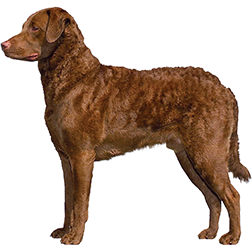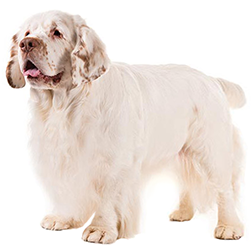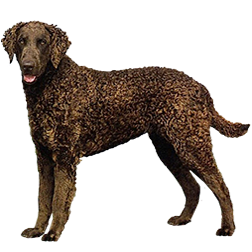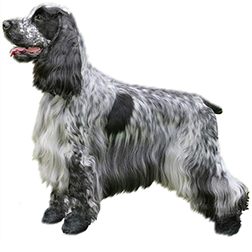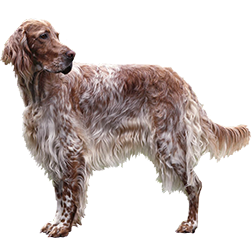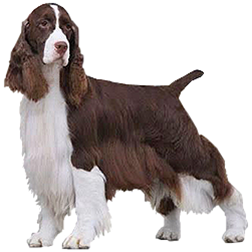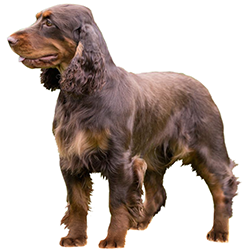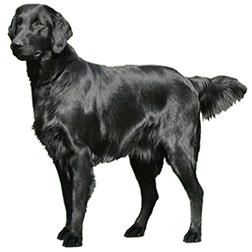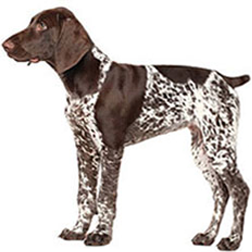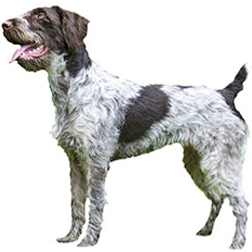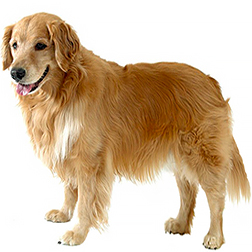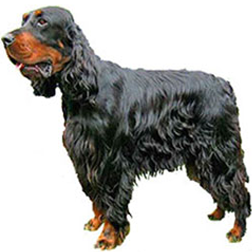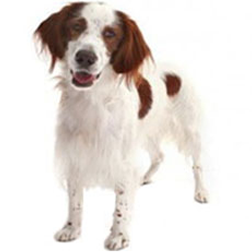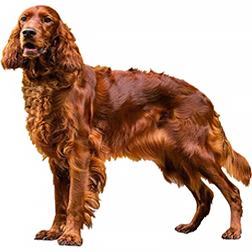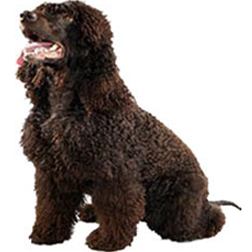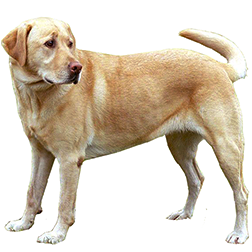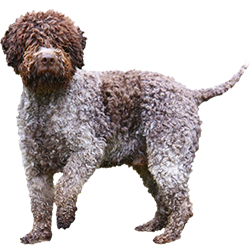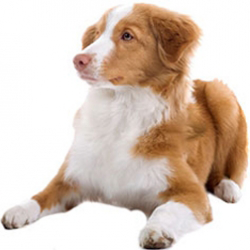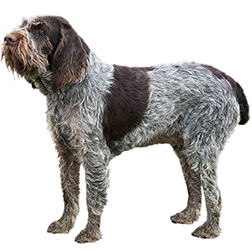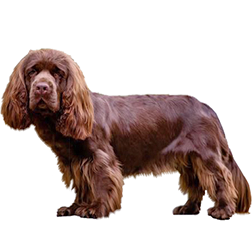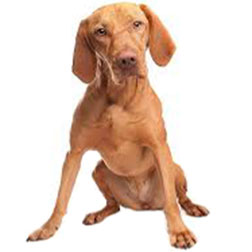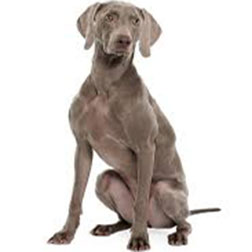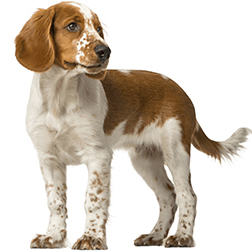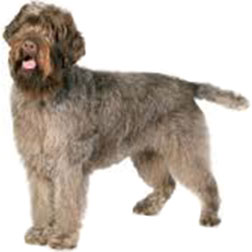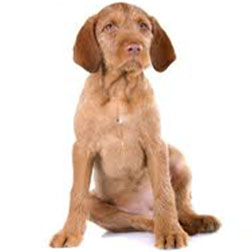Sporting Dog Breeds
The Ultimate Sporting Dog Group Guide
Introduction to the Sporting Dog Group
Imagine standing at the edge of a shimmering lake, a loyal companion by your side, their eyes fixed on the rippling water with eager anticipation. Welcome to the world of Sporting Dogs—a remarkable group of breeds that have been our trusted allies in the field, marsh, and forest for centuries. These dogs aren’t just pets; they’re partners, purpose-built for their roles in hunting, retrieving, and companionship.
The Sporting Dog GROUP is home to some of the most beloved and versatile breeds in the canine world. Whether they’re flushing game birds from the underbrush, diving into icy waters to retrieve ducks, or simply curling up by the fire after a long day, these dogs epitomize adaptability, athleticism, and heart. From the enthusiastic tail wag of a Labrador Retriever to the graceful elegance of an Irish Setter, each breed in this group offers a unique blend of traits that have endeared them to hunters, families, and dog lovers worldwide.
The Heart of a Sporting Dog
Sporting dogs are defined by their boundless energy, keen intelligence, and unparalleled devotion. Their history is deeply intertwined with human pursuits, primarily hunting and retrieving. But these breeds are more than their job descriptions; they are family-oriented, eager to please, and often playful clowns when off-duty. They thrive in environments where their natural abilities can shine—be it an expansive countryside, a bustling suburban park, or a well-organized agility course.
These dogs are categorized into four main types based on their roles
- Retrievers: Masters of bringing back game, such as the Golden Retriever or Labrador Retriever.
- Pointers: Experts at locating game and pointing hunters to their quarry, like the German Shorthaired Pointer.
- Setters: Known for their elegant stance while marking prey, including breeds like the English Setter and Irish Setter.
- Spaniels: Skilled at flushing game from cover, such as the Cocker Spaniel and English Springer Spaniel.
Why Sporting Dogs Captivate Us
What makes Sporting Dogs so captivating isn’t just their skill or history—it’s their personalities. These dogs are renowned for their friendliness and adaptability, making them ideal companions beyond the field. Their intelligence and trainability often place them at the top of obedience trials and working competitions. And let’s not forget their playful side; anyone who’s seen a Labrador bounding into a lake or a Golden Retriever gleefully carrying a shoe knows the joy these breeds bring to everyday life.
Fun Fact: Did you know that Labrador Retrievers have been America’s most popular dog breed for over 30 years? It’s no wonder—they’re affectionate, hardworking, and love to play!
A Journey Through the Group’s World
Picture this: a golden sunrise breaking over a misty marsh, the quiet interrupted only by the faint rustle of wings. At your side stands a sleek, attentive Labrador Retriever, poised for action, eyes locked on the horizon. This is the essence of the Sporting Dog GROUP—companions who are as at home in the great outdoors as they are curled up at your feet, bringing warmth and energy to every moment.
Sporting Dogs are not just functional hunters or retrievers; they’re adventurers, loyal companions, and boundless sources of joy. With wagging tails and a can-do spirit, they embody a blend of athleticism and heart that’s impossible to resist. From the gentle splash of a Chesapeake Bay Retriever diving for waterfowl to the graceful sweep of an English Setter moving through a meadow, every breed in this group carries a legacy of purpose and partnership.
Why This Group Captivates Dog Lovers
What draws us to Sporting Dogs? For starters, their adaptability makes them ideal for countless roles: hunting companions, therapy animals, family pets, and more. Their intelligence and eagerness to please mean they excel in training, while their outgoing personalities make them a delight to live with. Sporting Dogs bridge the gap between work and play, always ready for an adventure but equally happy to share a quiet evening at home.
Testimonial
"We brought home our Golden Retriever thinking he’d be the perfect jogging partner. Turns out, he’s also the neighborhood’s favorite playmate and the most dependable cuddler in the family!" – A Sporting Dog owner
Surprising First Impressions
Sporting Dogs may surprise you. While they’re often associated with hunting and retrieving, they’re also some of the most versatile companions around.
- Myth: Sporting Dogs are only for hunters.
Truth: Many thrive in urban homes, excelling in agility, obedience, and even couch-surfing! - Myth: They need endless exercise to be happy.
Truth: While active, many Sporting Dogs adapt to their owner’s lifestyle with regular engagement and affection.
Fun Fact: The Irish Water Spaniel’s coat is so curly and waterproof, it’s been called the “poodle of the marshlands.”
Naming Origins and General Characteristics
The Sporting Dog GROUP earned its name from its primary role as hunters' helpers, excelling in flushing, retrieving, and pointing game. These breeds share a natural affinity for water and the outdoors, often equipped with webbed feet, weather-resistant coats, and an innate sense of teamwork.
- Temperament: Friendly, outgoing, and eager to please.
- Physical Traits: Medium to large builds, often with sturdy frames and expressive eyes.
- Roles in Society: From fieldwork to therapy and companionship, these dogs wear many hats.
With their vibrant personalities and unwavering loyalty, Sporting Dogs have captured hearts for generations. In the chapters ahead, we’ll dive deeper into their history, unique traits, and care needs—unpacking everything that makes this group extraordinary.
Historical Background of the Sporting Dog GROUP
From Ancient Roots to Modern Homes
The story of the Sporting Dog GROUP begins long before the comforts of modern life, in an era when survival often depended on the partnership between humans and their canine companions. Archaeological evidence suggests that early Sporting Dogs evolved from ancient hunting breeds, selectively bred to complement human needs in the field. These dogs were valued for their sharp instincts, boundless energy, and loyalty—qualities that made them indispensable to hunters and gatherers alike.
As civilizations advanced, so too did the roles of Sporting Dogs. During the Renaissance, setters and pointers emerged as elite companions to European nobility, their elegant stature and specialized skills becoming synonymous with sophistication and refinement. In North America, retrievers like the Chesapeake Bay Retriever were developed to brave icy waters and bring back game, contributing to the livelihood of settlers and pioneers.
Fast forward to today, and Sporting Dogs have seamlessly transitioned from the hunting grounds to our living rooms. While many still thrive in their original roles, they’re equally cherished as therapy animals, competitive athletes in dog sports, and beloved family pets.
Legends and Lore
Throughout history, Sporting Dogs have been celebrated in legends, literature, and even heroic real-life tales
- “Dash,” Queen Victoria’s Beloved Companion: Queen Victoria of England adored her Cavalier King Charles Spaniel, Dash, who often accompanied her on hunts and was a constant source of joy.
- “King Buck,” the Legendary Retriever: In the 1950s, a Labrador Retriever named King Buck became the first dog to appear on a U.S. postage stamp, immortalizing his excellence as a hunting dog and companion.
- “Prince,” the Loyal Chesapeake Bay Retriever: Prince was renowned for his resilience, retrieving hundreds of ducks in freezing waters during one season alone, embodying the spirit of Sporting Dogs.
These stories reflect the group’s legacy of loyalty, courage, and utility.
Cultural Connections
Sporting Dogs hold a special place in various cultural traditions
- European Aristocracy: In the grand estates of Europe, setters, pointers, and spaniels were integral to the aristocratic pastime of upland bird hunting. Their graceful movements and unwavering focus became a symbol of wealth and status.
- North American Pioneers: Breeds like the Labrador Retriever and American Water Spaniel became essential to the rugged lifestyles of early settlers, helping provide food and ensuring survival in harsh environments.
- Modern Celebrations: Today, Sporting Dogs are celebrated in events like the Westminster Kennel Club Dog Show and the AKC Master National Retriever Championships, showcasing their remarkable skills and charm.
Fun Fact: The Lagotto Romagnolo, often dubbed the “truffle dog,” was historically used to retrieve waterfowl in Italy but has since become a truffle-hunting specialist, blending utility with culinary artistry.
The historical journey of Sporting Dogs is one of evolution, adaptation, and enduring partnership with humans. Their rich past sets the stage for their modern roles and enduring popularity, which we’ll explore further in the guide.
Classification and Standards
What Makes This Group Unique?
If dogs were attending a canine Olympics, the Sporting Dog GROUP would undoubtedly dominate the events requiring agility, endurance, and teamwork. This group is defined by its exceptional ability to assist humans in hunting and retrieving, but there’s more to these breeds than their skillset. They’re the “renaissance dogs” of the canine world—intelligent, versatile, and always up for a challenge.
Think of Sporting Dogs as a league of elite athletes, each with their unique specialties. Retrievers, for example, are the swim stars, known for their powerful strokes in icy waters. Pointers are the precision experts, akin to sharpshooters marking the exact location of game. Setters bring an element of elegance, their posture in the field as poised as a dancer mid-pirouette. And then there are the Spaniels—endearing, energetic, and always ready to bring the game back to their team.
What sets Sporting Dogs apart is their shared purpose-driven nature combined with a warm, sociable demeanor that makes them perfect for work and play.
Meet the Judges
How do kennel clubs decide which breeds belong in the Sporting Dog GROUP? Picture a panel of discerning judges deliberating over a canine talent show. Each breed is assessed based on traits like physical attributes, historical roles, and temperament. Organizations like the American Kennel Club (AKC) and Fédération Cynologique Internationale (FCI) have rigorous standards, often steeped in history and tradition.
Judges scrutinize details down to the curve of a setter’s tail or the webbing of a retriever’s paws. The goal is to ensure each breed fits the Sporting Dog mold—a skilled, purpose-driven dog bred for its role in hunting and companionship. And while this might seem straightforward, it’s anything but.
Fun Fact: Kennel club judges often face quirky challenges, such as distinguishing between the similar-looking Curly-Coated Retriever and the Flat-Coated Retriever. A good judge knows that it’s all in the texture of the coat!
Breed Wars
Ah, the drama of breed classifications! Over the years, debates have flared over which breeds truly belong in the Sporting Dog GROUP. For example
- The Nova Scotia Duck Tolling Retriever Debate: Some questioned whether this breed, known for luring ducks with its playful antics, should remain in the Sporting Dog GROUP or transition to a new category reflecting its unique skill set.
- Wirehaired Vizsla Controversy: This breed’s inclusion sparked debates about whether it’s distinct enough from its smooth-coated cousin to merit a separate classification.
These “breed wars” highlight the passion and precision behind kennel club standards—and add a touch of intrigue to the world of Sporting Dogs.
Variations Across Regions
What’s fascinating is how classification standards vary depending on where you are. For instance
- AKC (American Kennel Club): Groups breeds based on their roles and characteristics, categorizing nearly all hunting companions into the Sporting Dog GROUP.
- FCI (Fédération Cynologique Internationale): Takes a broader approach, with groups like “Gundogs” encompassing breeds that might fall into other categories elsewhere.
- The UK Kennel Club: Adds its own twist, with some breeds classified differently based on historical roles in British hunting traditions.
This regional variation means that a breed celebrated as a quintessential Sporting Dog in one country might find itself in a different group elsewhere—highlighting the diversity of perspectives in the canine world.
Fun Fact: The Irish Red and White Setter, often overshadowed by its all-red cousin, is classified as a separate breed in some countries, adding to its mystique and charm.
Physical Characteristics
A Walk Through the Lookbook
Welcome to the Sporting Dog runway, where function meets fashion and every breed struts its stuff with purpose and poise! These dogs are built for action, but their aesthetics are just as captivating as their skills. Let’s take a walk down the runway to admire their standout features
- Retrievers: Golden Retrievers and Labrador Retrievers show off their thick, water-resistant double coats, perfect for diving into icy lakes. Their powerful, streamlined bodies scream athleticism, while their expressive eyes and friendly smiles steal hearts.
- Setters: The graceful Irish Setter glides across the stage with its flowing, mahogany-red coat, a testament to its elegance. English Setters bring a unique “belton” speckling pattern, blending white with flecks of blue, orange, or lemon—a natural work of art.
- Spaniels: Enter the Spaniels with their luxurious feathered ears and compact, agile frames. From the Field Spaniel’s sleek, glossy coat to the American Cocker Spaniel’s show-stopping “big hair,” each spaniel adds a touch of charm to the group.
- Pointers: The German Shorthaired Pointer combines strength with agility, its sleek, spotted coat hinting at its hunting prowess. The English Pointer’s dignified, angular head and lithe body make it a timeless classic.
Quirky Traits and Fun Facts
The Sporting Dog GROUP isn’t just visually stunning—it’s full of delightful quirks that make each breed stand out
- Duck-Worthy Feet: Many Sporting Dogs, like the Chesapeake Bay Retriever, have webbed feet, making them expert swimmers and perfect companions for waterfowl hunters.
- Curly-Coated Marvels: The Curly-Coated Retriever’s tightly coiled fur serves as natural insulation, keeping it warm and dry even in harsh conditions.
- The Toller’s Wag: The Nova Scotia Duck Tolling Retriever’s playful tail wag isn’t just adorable—it’s functional, mimicking the movements of a fox to lure ducks closer.
- Big Ears, Big Job: The long, silky ears of spaniels aren’t just decorative—they help funnel scents toward their nose when tracking game.
Fun Fact: The Lagotto Romagnolo’s dense, curly coat might look like a cuddly teddy bear, but it’s waterproof and dirt-resistant, perfect for truffle hunting in muddy conditions!
Diversity Within the Group
What’s remarkable about the Sporting Dog GROUP is its visual variety. From the tall, elegant Gordon Setter to the stocky, hardworking Sussex Spaniel, these breeds showcase the spectrum of canine beauty. Their coats come in a rainbow of colors, from the warm gold of a Golden Retriever to the rich liver hues of a German Wirehaired Pointer. Sizes range from the compact, agile Boykin Spaniel to the larger-than-life Flat-Coated Retriever.
Each breed’s physical design reflects its historical role. Retrievers are built for stamina and swimming, pointers for precision and speed, and spaniels for versatility and agility. Yet despite their differences, they all share a distinct air of purpose and athleticism.
Fun Fact: The English Setter is sometimes called the “gentleman of the dog world” thanks to its refined looks and regal posture.
Temperament and Personality
The Group’s Signature Charm
If Sporting Dogs were at a party, they’d be the social butterflies, entertaining the crowd with their enthusiasm, charm, and quick wit. These dogs are known for their friendly, outgoing nature and their unwavering desire to be part of the action. Their signature charm lies in their ability to balance boundless energy with a sweet, affectionate disposition.
Take, for instance, the Golden Retriever, often dubbed the "comedian of the canine world." These lovable goofballs are always ready to fetch a ball, play in the yard, or simply plop down for a cuddle session. Or picture a Labrador Retriever greeting guests at the door, tail wagging like a propeller, their entire body vibrating with excitement—it’s impossible not to smile around them.
Anecdote: A Chesapeake Bay Retriever named “Baxter” once helped his owner retrieve not just ducks but also a wallet dropped in a lake by a fisherman. Sporting Dogs love having a job, and they’ll find one even when it’s unexpected!
What Owners Love Most
Ask any Sporting Dog owner, and they’ll tell you these breeds are all heart. Their loyalty is unmatched, and their eagerness to please makes them wonderfully trainable and endlessly endearing. Owners rave about their dogs’ playful antics, like hiding toys in the most unexpected places or trying to “help” with household chores.
Some standout traits include
- Unshakable Devotion: These dogs bond deeply with their families, often following their favorite humans from room to room.
- Boundless Enthusiasm: Whether it’s a hike in the woods or a simple walk to the mailbox, every outing is an adventure.
- Clever Problem-Solving: Don’t be surprised if your Spaniel learns how to open doors or your Pointer outsmarts you in a game of hide-and-seek.
Fun Fact: Many owners of English Springer Spaniels affectionately call them "Velcro dogs" because they stick so closely to their loved ones, always eager to be part of the action.
Unexpected Personalities
While Sporting Dogs have a reputation for being energetic and outgoing, some individual dogs break the mold, proving that personality is as unique as the dog itself.
- The Lazy Labrador: Not all Labs are non-stop energy machines. Take “Milo,” a Labrador who preferred napping on the couch to chasing sticks, becoming an unlikely star in his owner’s yoga classes as the “master of relaxation.”
- The Aloof Irish Setter: Known for their friendly exuberance, one Irish Setter named “Ruby” surprised everyone by showing a more reserved, dignified side, preferring quiet evenings with a book-loving owner to the typical Setter antics.
- The Spaniel that Didn’t Love Water: Despite their reputation as water dogs, a Boykin Spaniel named “Winnie” made headlines for her love of land-based activities, excelling in agility competitions while steering clear of lakes and ponds.
These surprising stories highlight the individuality within the group, proving that while Sporting Dogs share common traits, each one brings its unique personality to the table.
Purpose and Roles
Original Roles and Modern-Day Marvels
The Sporting Dog GROUP has always been defined by its deep sense of purpose. Historically, these breeds were bred for specific tasks: retrieving waterfowl, flushing game from underbrush, and pointing hunters toward their targets. Their partnership with humans was essential, blending intelligence, physical stamina, and an unmatched work ethic.
Fast forward to today, and Sporting Dogs have embraced a wide range of roles beyond the hunting grounds. While many still thrive in their original jobs, others have transitioned seamlessly into modern-day marvels. They’re therapy dogs, search-and-rescue heroes, and even Instagram influencers with thousands of followers. Their versatility, paired with their friendly and trainable nature, makes them ideal for diverse tasks in an ever-changing world.
Anecdote: An Irish Setter named “Finn” has gained a loyal following on social media by showcasing his daily “workouts,” proving that even traditionally outdoorsy breeds can charm audiences in the digital age.
Famous Dogs in History
Sporting Dogs have carved their names into the annals of history, inspiring admiration and affection through their incredible feats
- King Buck, the Legendary Retriever: As the first dog featured on a U.S. postage stamp, King Buck symbolized excellence in hunting and retriever trials, earning his place as an American icon.
- Buddy, the First Seeing Eye Dog: While not strictly in the Sporting Dog GROUP, Buddy, a German Shepherd, opened doors for guide dogs, inspiring breeds like Labrador Retrievers to take on similar life-changing roles.
- Laddie Boy, the Presidential Airedale: Though not a Sporting Dog, Laddie Boy’s popularity during the Harding administration highlighted how working dogs could also become national celebrities.
Superstars in Action
Whether in their traditional roles or modern professions, Sporting Dogs continue to dazzle with their capabilities
- Golden Retrievers in Search and Rescue: After the 9/11 attacks, Golden Retrievers like “Bretagne” were deployed to Ground Zero, showcasing their courage, intelligence, and unwavering dedication.
- Chesapeake Bay Retrievers on Duck Hunts: Known for their resilience in icy waters, these dogs remain a favorite among hunters for their strength and loyalty.
- Nova Scotia Duck Tolling Retrievers in Agility Trials: With their boundless energy and sharp minds, Tollers have become stars in agility competitions, proving their versatility beyond the field.
- Labrador Retrievers as Therapy Dogs: Labs like “Hope” work tirelessly in hospitals, bringing comfort and joy to patients of all ages, a modern extension of their innate desire to please and help.
Fun Fact: The Spinone Italiano, originally bred for pointing and retrieving, is known for its clownish demeanor and has recently gained fame as a family dog with a knack for making everyone laugh.
Training and Obedience
Training Tales
Training a Sporting Dog is like working with the class clown—enthusiastic, eager to please, but occasionally distracted by the sheer joy of life. Their intelligence and energy make them fast learners, but their playful streak can lead to some memorable training moments.
Take, for example, “Max,” a Labrador Retriever who mastered basic commands in record time but decided that retrieving slippers wasn’t enough—he started bringing his owner’s neighbors' shoes, proudly delivering them to the porch. Or “Ruby,” an Irish Setter who aced agility courses but insisted on a celebratory zoomie after each obstacle, leaving her trainer in stitches.
These dogs thrive when training is fun and engaging, turning lessons into a game they can win (and enjoy).
Tips from the Pros
Training Sporting Dogs requires a balance of patience, consistency, and creativity. Here are some pro tips to make the most of your sessions
- Harness Their Instincts: Build on their natural talents by incorporating activities like fetch, scent tracking, or field exercises into their training. These tasks not only engage their minds but also fulfill their instinctual drives.
- Keep It Positive: Sporting Dogs respond best to positive reinforcement—think treats, toys, and lots of praise. Their desire to please makes punishment counterproductive.
- Short and Sweet: These breeds can get bored easily, so keep training sessions brief but consistent. A five-minute session twice a day can be more effective than a marathon session.
- Socialize Early: Their outgoing nature shines when properly socialized. Introduce them to different environments, people, and animals early to build confidence and reduce anxiety.
Pro Tip: Incorporate water into training for breeds like retrievers and spaniels. Teaching commands in a shallow pool or lake can make the experience both exciting and effective.
Challenges and Triumphs
Training Sporting Dogs isn’t without its hurdles. Their energy and intelligence, while assets, can sometimes present challenges
- Challenge: Easily Distracted by Scents
Sporting Dogs, like pointers and spaniels, are born to sniff out prey. This instinct can lead to them chasing scents during training sessions.
Solution: Train in distraction-free environments initially, gradually introducing distractions as their focus improves. Using scent-based games can also help channel this tendency. - Challenge: Boundless Energy
Their high energy levels can make them restless, especially during basic obedience training.
Solution: Incorporate exercise before training sessions to burn off excess energy, helping them focus better. A quick game of fetch or a brisk walk can work wonders. - Challenge: Overeagerness to Please
Their enthusiasm can sometimes result in preempting commands or showing impatience.
Solution: Work on impulse control with exercises like “wait” or “stay,” rewarding them for calm and controlled behavior.
Success Story: “Bella,” a Golden Retriever, struggled with leash pulling, but after consistent training with positive reinforcement and short, focused walks, she transformed into the neighborhood’s model walker—proving that with persistence, triumph is always possible.
Health and Care
Keeping Them Happy and Healthy
Sporting Dogs are like finely tuned athletes—they need a balanced diet, regular exercise, and a bit of TLC to stay in peak condition. Caring for these dynamic dogs isn’t complicated, but it does require some dedication. Think of it like maintaining a sports car: with the right attention, they’ll run smoothly and keep performing at their best.
- Nutrition: These active dogs thrive on high-quality, protein-rich diets to fuel their energy levels. Retrievers, for instance, may need slightly controlled portions since they can be prone to overeating. Imagine feeding a marathon runner—they need the right fuel, not just extra calories.
- Grooming: While many Sporting Dogs have water-resistant coats, they still require regular grooming. Breeds like the Golden Retriever benefit from weekly brushing to keep their coats tangle-free and shiny. Spaniels, with their feathery ears and legs, often need extra attention to avoid matting.
- Veterinary Care: Regular check-ups are essential. Some Sporting Dogs, like German Shorthaired Pointers, may be predisposed to hip dysplasia or ear infections due to their active lifestyles and physical traits. Preventive care, including joint supplements and ear cleaning, can go a long way.
Pro Tip: Introduce care routines like grooming and nail trimming early to make them a stress-free bonding experience.
Weird but True
Sporting Dogs are full of quirks, and some of their health habits might surprise you
- The Duck-Diver’s Ears: Retrievers and spaniels often have long, floppy ears that trap moisture—perfect for swimming but also prone to ear infections. Regular cleaning keeps them in tip-top shape.
- Toller “Scream:” The Nova Scotia Duck Tolling Retriever is famous for its unique high-pitched scream when excited—adorable for some, startling for others!
- Webbed Wonders: Many Sporting Dogs, like the Chesapeake Bay Retriever, have webbed feet, an adaptation that makes them excellent swimmers but also requires occasional checking for debris or irritation.
Fun Fact: The Irish Water Spaniel’s curly coat is not just waterproof—it also helps regulate their body temperature in cold water.
Playtime is Medicine
For Sporting Dogs, exercise and play aren’t just activities—they’re lifelines. These dogs need regular physical and mental stimulation to stay happy and healthy. Lack of activity can lead to boredom, which often results in destructive behavior.
- Fetch and Beyond: Retrievers are naturals at games like fetch, but mixing it up with water-based activities or retrieving different objects keeps it exciting.
- Scent Games: Spaniels and pointers excel at nose work, turning playtime into a mentally stimulating treasure hunt.
- Agility Adventures: Many breeds in this group, like Setters and Tollers, thrive in agility courses that test their speed and problem-solving skills.
Anecdote: A Labrador Retriever named “Shadow” was once prescribed daily play sessions with a frisbee as part of his recovery plan after surgery. His enthusiasm for the game sped up his healing and brought endless smiles to his owners.
Fun Fact: Studies show that regular play reduces stress and improves the lifespan of active breeds like Sporting Dogs. A tired dog is a happy (and healthy) dog!
Socialization and Compatibility
Your New Best Friend
If Sporting Dogs had a motto, it might be “Together is better.” These breeds are hardwired to bond deeply with their families, becoming not just pets but true companions. Their affectionate and loyal nature makes them ideal for households looking for a four-legged friend to share life’s moments—whether that’s a weekend hike or a lazy Sunday afternoon on the couch.
Take the Labrador Retriever, for example, often described as the quintessential family dog. Labs are happiest when surrounded by their people, their wagging tails and gentle demeanor making them instant favorites. Or consider the Golden Retriever, who seems to have a natural gift for sensing emotions, often leaning in for a comforting nuzzle when someone is feeling down. Sporting Dogs thrive on connection and are often referred to as "shadow dogs" because they’ll follow you everywhere—yes, even to the bathroom!
Lessons in Friendship
Proper socialization is key to helping Sporting Dogs shine as companions. These breeds are naturally friendly and outgoing, but early exposure to different environments, people, and animals helps them grow into well-rounded adults.
Here are some practical socialization tips
- Start Early: Introduce puppies to a variety of experiences, from meeting new people to walking on different surfaces. This builds confidence and adaptability.
- Positive Reinforcement: Reward calm and friendly interactions with treats or praise to encourage good behavior.
- Playdates: Arrange meetups with other dogs to teach appropriate play behavior. Sporting Dogs often thrive in group settings, as they were bred to work collaboratively.
- Include the Whole Family: Sporting Dogs are particularly great with children, but it’s essential to teach kids how to interact respectfully. Supervised play helps establish trust and boundaries.
Anecdote: A Boykin Spaniel named “Charlie” became a star at his local nursing home, where he’d greet residents with a wagging tail and sit patiently while they stroked his soft fur. His visits brought joy to seniors who treasured his gentle nature and unwavering attention.
Scenarios of Connection
-
With Kids: Sporting Dogs are often described as “nanny dogs” for their patience and playfulness. An English Setter named “Luna” became her family’s unofficial babysitter, always staying close to the kids during backyard adventures.
-
With Seniors: These breeds’ calm yet attentive demeanor makes them excellent companions for older adults. A retired couple adopted a Gordon Setter who quickly learned to fetch slippers and alert them to visitors at the door.
-
With Other Pets: Sporting Dogs usually get along well with other animals, especially when introduced properly. A Golden Retriever named “Cooper” made fast friends with a rescue cat, and the two became inseparable, often sharing a sunny spot on the porch.
Living Arrangements and Environment
Designing the Perfect Dog Space
Sporting Dogs are like the ultimate houseguests: they don’t ask for much, but they sure appreciate a space tailored to their needs. Whether you’re in a cozy apartment or a sprawling farmhouse, creating the right environment can make a world of difference for these energetic companions.
- The Doggy Den: Sporting Dogs thrive with a designated space to call their own. Consider a comfy dog bed tucked in a quiet corner for relaxation after an action-packed day. Bonus points if the bed is waterproof for those wet retrievers who love a post-swim nap!
- Interactive Zones: Think of their living space as a doggy playground. Incorporate puzzles, chew toys, and space for a quick game of tug-of-war indoors.
- The Great Outdoors: For breeds like Pointers or Setters, a secure backyard is their slice of heaven. Add in a kiddie pool during summer, and you’ll have a Chesapeake Bay Retriever thinking they’ve hit the jackpot.
Humorous Tip: Keep your shoes out of reach—unless you’re prepared for your Labrador to redecorate with their “unique taste” in footwear!
City or Country Life?
Sporting Dogs are adaptable and can thrive in both urban and rural settings with a little creativity
- City Living: Even in an apartment, these breeds can flourish as long as they get plenty of exercise. Daily walks, trips to the dog park, and games of fetch in nearby green spaces keep their minds and bodies active. A Golden Retriever in the city can be as happy as one on a farm—as long as they’re included in your daily adventures.
- Country Living: Wide-open spaces are a Sporting Dog’s dream, offering room to run, sniff, and explore. Breeds like the German Shorthaired Pointer excel in rural environments where their natural instincts can shine.
Pro Tip: Use leashed walks and structured activities in urban settings to simulate the mental stimulation they’d get from running free in the country.
Climate and Quirks
Sporting Dogs are generally adaptable to various climates, but some breeds handle weather extremes better than others.
- Cold Climates: Retrievers like the Chesapeake Bay or Labrador Retriever are natural cold-weather champions. Their double coats and love of water mean they won’t bat an eye at a snowy adventure. However, they might leave snowy pawprints everywhere when they get back inside—consider keeping a towel handy!
- Hot Climates: Breeds like the Vizsla, with their sleek coats, fare well in warmer temperatures but still need shade and hydration. Cooling mats or splash pools can be lifesavers on scorching days.
- All-Weather Champs: The Spinone Italiano, with its hardy build and waterproof coat, is a jack-of-all-climates, happily trotting through rain or shine.
Anecdote: An Irish Water Spaniel named “Moose” became famous in his neighborhood for his love of winter. He would enthusiastically dive into snowbanks, emerging like a curly-haired snowman before shaking off in a delighted flurry of snowflakes.
Fun Facts and Quirks
Did You Know?
The Sporting Dog GROUP is filled with fascinating trivia and quirky tidbits that make these breeds even more lovable. Here are a few fun facts to brighten your day:
- Toller Tail Wagging: The Nova Scotia Duck Tolling Retriever’s tail is more than just cute—it mimics the movement of a fox’s tail to lure curious ducks closer to hunters.
- Golden Retrievers and Stuffed Animals: Golden Retrievers are famous for their “soft mouths,” so gentle they can carry raw eggs without breaking them. This trait also makes them notorious for collecting (and occasionally hoarding) stuffed animals.
- English Setter’s Speckled Coat: The term “belton” used to describe an English Setter’s coat pattern comes from a village in England and is unique to this breed.
- Labrador’s Olympic Swimmers: Labrador Retrievers have an extra layer of fur and webbed feet, making them some of the best swimmers in the canine world. They’re practically built for the water!
Fun Fact: The Boykin Spaniel is South Carolina’s official state dog, chosen for its origins as a versatile and loyal hunting companion developed in the state.
Bizarre Habits and Endearing Oddities
Sporting Dogs aren’t just talented—they’re wonderfully quirky, too! These unique behaviors and traits are sure to bring a smile
- The “Toller Scream”: Nova Scotia Duck Tolling Retrievers are known for their high-pitched, ear-piercing scream of excitement. While it might catch you off guard at first, owners say it’s part of their charm.
- Spaniels and Their Ears: Some spaniels, like the American Cocker Spaniel, have such long, feathered ears that they’ll occasionally dip into their food or water bowls. Pet parents often resort to using “snoods” (fancy ear covers) to keep things tidy.
- Weimaraner Velcro Dogs: Weimaraners are so attached to their humans they’re often called “Velcro dogs.” Don’t be surprised if yours insists on sharing the couch—or even the bed.
- Irish Setter Energy Bursts: Irish Setters are known for their “zoomies,” where they suddenly dart around at full speed in joyful, random bursts of energy. It’s their way of saying, “Life is great!”
- The Chesapeake’s Loyal Side: Chesapeake Bay Retrievers are famously devoted to their families, sometimes so much so that they’ll “guard” their favorite humans during nap time by laying across their laps.
Fun Anecdote: A Field Spaniel named “Buddy” was known for retrieving not only ducks but also whatever random object caught his fancy during walks—shoes, pinecones, and even a garden gnome once made it into his collection.
Financial and Practical Considerations
Breaking the Bank or Budget-Friendly?
Owning a Sporting Dog can feel like owning a luxury car—there are initial costs, ongoing maintenance, and a lifetime of rewards. While some breeds in this group are more budget-friendly, others come with higher price tags, particularly for purebred puppies from reputable breeders. Beyond the purchase price, there are care costs like food, grooming, veterinary visits, and training.
- Initial Costs: Depending on the breed and source, acquiring a Sporting Dog can cost anywhere from $500 to $3,000. Rescue organizations often offer lower-cost adoption options, typically ranging from $100 to $500.
- Monthly Expenses: With their high energy levels and active lifestyles, Sporting Dogs require premium-quality food, which can cost around $50–$100 monthly. Add grooming, toys, and occasional vet visits, and you’re looking at $150–$300 per month.
- Training Investment: Enrolling in training classes or hiring a trainer for specific needs is an upfront investment that pays dividends in a well-behaved, happy dog.
Pro Tip: Budget for annual health screenings, especially for breeds prone to genetic conditions like hip dysplasia or ear infections, to catch issues early and keep your furry friend thriving.
The Real Cost of Happiness
The joy Sporting Dogs bring to their families is priceless. Whether it’s the unwavering loyalty of a Labrador Retriever or the playful antics of a Spaniel, the emotional rewards far outweigh the financial costs.
Anecdote: “Bailey,” a Golden Retriever, was adopted by a family looking for a therapy dog for their child with autism. Not only did Bailey provide comfort and companionship, but he also helped the child build confidence and social skills, becoming a priceless part of their lives.
Ethical and Legal Considerations
Being an Ethical Advocate
Owning a Sporting Dog comes with a responsibility to be an ethical advocate for the breed. This includes choosing breeders carefully, ensuring the dog’s needs are met, and promoting responsible ownership.
- Adopt or Shop Responsibly: If purchasing from a breeder, verify their reputation and breeding practices. Reputable breeders prioritize health and temperament over profit.
- Spay and Neuter: Unless you plan to responsibly breed, spaying or neutering your dog helps control pet overpopulation.
- Commitment to Care: These high-energy dogs require time, exercise, and attention. Before adopting or buying, consider whether you can meet their needs.
Positive Message: Owning a Sporting Dog isn’t just about companionship—it’s about becoming part of a legacy of love, partnership, and care.
Unleashing the Rules
Navigating the legal side of dog ownership doesn’t have to be a drag. Here are some key considerations
- Leash Laws: Sporting Dogs have a knack for chasing birds and scents, so keeping them leashed in public is both a legal and practical safeguard.
- Licensing and Vaccinations: Many municipalities require dog licenses and up-to-date vaccinations, including rabies, to keep your pet (and the community) safe.
- Breed-Specific Laws: While rare for Sporting Dogs, some breeds may face restrictions depending on local regulations. Always check your area’s rules before adopting.
Relatable Example: Imagine your spirited Vizsla finds its way into a neighbor’s yard to join their kids in a soccer game. Not only is this a funny story to tell, but it’s also a reminder of the importance of secure fencing and leash laws!
Group-Specific Activities and Sports
From Couch Potatoes to Champions
Sporting Dogs are born for action, and their talents shine brightest when they’re engaged in group-specific activities and sports. While these dogs love their downtime as much as anyone, they thrive when given a purpose, making them ideal partners for a wide range of fun and challenging activities. Whether you’re looking for a way to bond or channel their energy, there’s something for every Sporting Dog to enjoy.
- Field Trials: These events let Sporting Dogs showcase their natural hunting instincts. Retrievers, setters, and pointers compete to retrieve game or track scents, earning applause for their precision and teamwork.
- Agility Courses: With their athleticism and intelligence, breeds like Vizslas and Irish Setters excel in agility training. Zipping through tunnels, leaping over hurdles, and navigating weave poles keeps their minds sharp and bodies active.
- Dock Diving: This water-based activity is a retriever’s dream. Labradors and Chesapeake Bay Retrievers make a splash (literally!) as they compete to see who can jump the farthest or highest into the water.
- Scent Work: Tap into their remarkable noses with scent detection games or trials. Spaniels and pointers especially enjoy the challenge of sniffing out hidden items.
Fun Activity: Create a DIY scavenger hunt in your backyard. Hide treats or toys and let your Sporting Dog put their nose to work finding them—it’s like a treasure hunt with wagging tails!
Tail-Wagging Competitions
Sporting Dogs are no strangers to the spotlight, excelling in competitions that celebrate their unique abilities and heritage. Here are some popular events that showcase the group’s skills
- The Westminster Kennel Club Dog Show: Sporting Dogs consistently steal the show with their grace, athleticism, and poise. Whether it’s an elegant Irish Setter or a hardworking Spaniel, this event highlights their best qualities.
- Retriever Field Trials and Hunt Tests: These events test a retriever’s ability to follow commands, retrieve game, and work alongside their handler. It’s a thrilling display of teamwork and precision.
- Spaniel Hunt Tests: Spaniels like the English Springer Spaniel demonstrate their skill at flushing and retrieving game, embodying the Sporting Dog spirit.
- AKC Agility Championships: Sporting Dogs often dominate these events, dazzling audiences with their speed and agility.
Anecdote: A Labrador Retriever named “Splash” became a local dock-diving hero after setting a record jump in her town’s annual pet festival. Her owner said she trained for fun in their backyard pool, proving that even casual practice can lead to big moments!
Famous Breeds and Notable Dogs
Spotlight on Stars
The Sporting Dog GROUP is home to some of the most celebrated and heroic dogs in history. These remarkable canines have made their mark through bravery, loyalty, and unforgettable accomplishments.
- King Buck (Labrador Retriever): As the first dog to appear on a U.S. postage stamp, King Buck became a national icon for his outstanding achievements in retriever field trials. His legacy represents the intelligence and work ethic of the Sporting Dog GROUP.
- Bretagne (Golden Retriever): Bretagne was one of the last surviving search-and-rescue dogs deployed to Ground Zero after the 9/11 attacks. Her work brought hope and healing to countless individuals, highlighting the group’s bravery and compassion.
- Millie (English Springer Spaniel): Former U.S. President George H.W. Bush’s beloved dog, Millie, became a household name, even “writing” a best-selling book titled Millie’s Book: As Dictated to Barbara Bush. Her charm won over a nation.
- Duck (Nova Scotia Duck Tolling Retriever): Famous for retrieving ducks with uncanny skill, Duck earned a reputation as one of the best waterfowl retrievers in North America, inspiring countless hunters to seek out this breed.
Anecdote: A Gordon Setter named “Scout” once saved his owner’s life by alerting them to a fire in their home, proving that these dogs are more than companions—they’re heroes.
Paws in Pop Culture
Sporting Dogs have left their pawprints on the entertainment world, charming audiences with their intelligence, beauty, and heart
- Shadow (Golden Retriever) from Homeward Bound: Shadow’s loyalty and determination to reunite with his family in this heartwarming movie captured the essence of what makes Sporting Dogs special.
- Marley (Labrador Retriever) from Marley & Me: Marley’s mischievous yet lovable antics stole the hearts of viewers and showcased the endearing quirks of Labradors.
- Buddy (Golden Retriever) from Air Bud: This talented Golden Retriever wowed audiences with his basketball skills, proving Sporting Dogs excel in sports both on and off the field.
- Lady (Cocker Spaniel) from Lady and the Tramp: Lady’s sweet demeanor and unforgettable spaghetti scene solidified her place in cinematic history, introducing audiences to the charm of Sporting Dogs.
Practical Tips for Owners
Pro Tips for Newbies
Bringing home a Sporting Dog is like inviting an Olympic athlete to live with you—they’re energetic, intelligent, and ready for action. If you’re new to the group, here are some beginner-friendly tips to ensure a smooth transition and a happy pup
- Embrace the Energy: Sporting Dogs need regular exercise to thrive. Daily walks, games of fetch, or even swimming sessions are essential to keep them physically and mentally fit. Think of it as your new fitness routine—your dog is your built-in personal trainer!
- Start Training Early: These dogs are smart and eager to please, making them quick learners. Begin with basic commands like sit, stay, and come, and gradually introduce more advanced tricks or tasks. Positive reinforcement works wonders.
- Socialize, Socialize, Socialize: Expose your dog to various people, pets, and environments to build confidence and curb shyness or over-exuberance. Sporting Dogs are naturally social, so this will be fun for both of you!
- Invest in Chew Toys: Sporting Dogs are known for their love of carrying and chewing. A sturdy chew toy can save your shoes, furniture, and sanity.
Pro Tip: If you have a water-loving breed like a Labrador or Chesapeake Bay Retriever, keep a towel handy by the door—they will find water, even if it’s just a muddy puddle.
Common Owner Missteps
Owning a Sporting Dog is a joy, but even seasoned owners can make mistakes. Here are a few missteps to avoid—delivered with a dash of humor
- Skipping Exercise: Thinking you can skip a walk “just this once” with a Sporting Dog? Think again. An under-exercised Golden Retriever can quickly transform into an overzealous decorator, rearranging your couch cushions into an artistic pile.
- Underestimating Their Intelligence: Sporting Dogs are clever and will figure out how to open cabinets, steal food, or outsmart you in hide-and-seek. If you leave a plate of cookies unattended, don’t blame your Labrador for their “vanishing act.”
- Overindulging Treats: It’s easy to reward good behavior, but Sporting Dogs are masters at convincing you they’ve earned “just one more.” Too many treats can lead to weight gain, so use low-calorie options or their daily kibble as rewards.
- Neglecting Grooming Needs: Breeds like Setters and Spaniels need regular brushing to prevent mats and keep their coats shiny. Skipping grooming can result in a tangled mess—and a very unhappy pup during their next grooming session.
Humorous Tip: Never assume your Sporting Dog won’t jump into the water. Whether it’s a lake, pool, or even your bathtub, these pups have a knack for finding ways to get wet when you least expect it!
Resources and Support
Join the Pack
Owning a Sporting Dog is a journey best shared with others who understand the quirks, joys, and challenges of this energetic group. Thankfully, there’s no shortage of breed-specific clubs and online communities where you can connect, learn, and celebrate your dog’s unique traits.
- Breed Clubs: Organizations like the American Chesapeake Club or the Golden Retriever Club of America offer invaluable resources, from training tips to health advice. They also host events like meetups, trials, and competitions, where you can see these dogs in action and meet fellow enthusiasts.
- Online Communities: Platforms like Facebook and Reddit are home to groups dedicated to Sporting Dogs, where members share photos, funny stories, and advice. It’s the perfect way to find your pack—virtually!
- Training Classes and Local Groups: Many communities have obedience classes or breed-specific meetups that provide hands-on learning and social opportunities for both you and your dog.
Pro Tip: Joining a breed club often gives you access to newsletters, expert advice, and even exclusive merchandise that lets you proudly display your Sporting Dog pride!
Best Reads for Dog Lovers
Dive deeper into the world of Sporting Dogs with these engaging books and articles that celebrate the group’s charm, history, and care
- “Golden Retriever: History, Behavior, and Training” by Anna Katherine Nicholas
A must-read for Golden Retriever fans, offering insights into their origins and tips for training. - “The Sporting Spaniel Handbook” by H. Edward Clarke
This classic guide covers everything you need to know about Spaniels, from grooming to fieldwork. - “Labrador Retrievers: Everything You Need to Know” by Richard G. Beauchamp
An accessible and informative read for Lab enthusiasts, complete with tips for first-time owners. - AKC Articles and Blogs: The American Kennel Club website is a treasure trove of breed-specific information, including care tips, breed histories, and competition updates.
- “Dog Whisperer with Cesar Millan” (TV series): For visual learners, this series offers practical training tips with heartwarming stories that often include Sporting Dogs.
Fun Fact: Many breed clubs publish their own books or magazines featuring real-life stories, training advice, and stunning photos of their dogs in action.
Conclusion
Why You’ll Fall in Love
Sporting Dogs have a special way of capturing hearts. Their boundless enthusiasm, unwavering loyalty, and undeniable charm make them more than just pets—they’re family. Whether it’s a Labrador Retriever joyfully diving into the nearest pond, a Golden Retriever offering a comforting nuzzle after a tough day, or a Spaniel zipping around the yard in a burst of sheer joy, these dogs bring endless energy and affection to every moment.
Their intelligence, adaptability, and strong desire to please make them ideal companions for families, adventurers, and everyone in between. Sporting Dogs don’t just share your life; they enrich it, turning the ordinary into something extraordinary with their playful antics and soulful eyes.
Your Next Adventure Awaits
Owning a Sporting Dog is not just a decision; it’s the beginning of a beautiful journey. Whether you’re considering adopting your first dog or expanding your pack, the Sporting Dog GROUP offers a companion that fits every lifestyle. From their athletic prowess to their loving nature, these dogs are ready to be your hiking buddy, training partner, and cuddle companion all in one.
So, why wait? Your next adventure could be a stroll in the park with a German Shorthaired Pointer, a water-filled escapade with a Chesapeake Bay Retriever, or a heartwarming snuggle with an Irish Setter. Whatever the activity, a Sporting Dog will be right by your side, tail wagging, ready to share the joy.
As you embark on this journey, remember: life is always better with a Sporting Dog by your side. The loyalty, love, and laughter they bring will make every day brighter and every moment more memorable.
Did You Enjoy this Article? Share it and Help Us Spread the Word!
If you found this article helpful, we'd appreciate it if you could share it with your friends or link to it from your website, blog, or group! You can also use the convenient social share tabs on the left side of the screen to instantly share this page to your social media feed. For more ways to support and promote the American Breeder Community, visit our Share & Promote Together page for social media posts and memes you can copy and share. Your support means the world to us!
Disclaimer: The information provided in this article is for general informational purposes only and does not constitute legal, medical, financial, or professional advice. While we strive for accuracy, we make no representations or warranties regarding the completeness, accuracy, reliability, or suitability of the information. Please consult with a professional before making decisions based on the content provided. American Breeder Inc. assumes no responsibility for any errors or omissions or for the results obtained from the use of this information.

